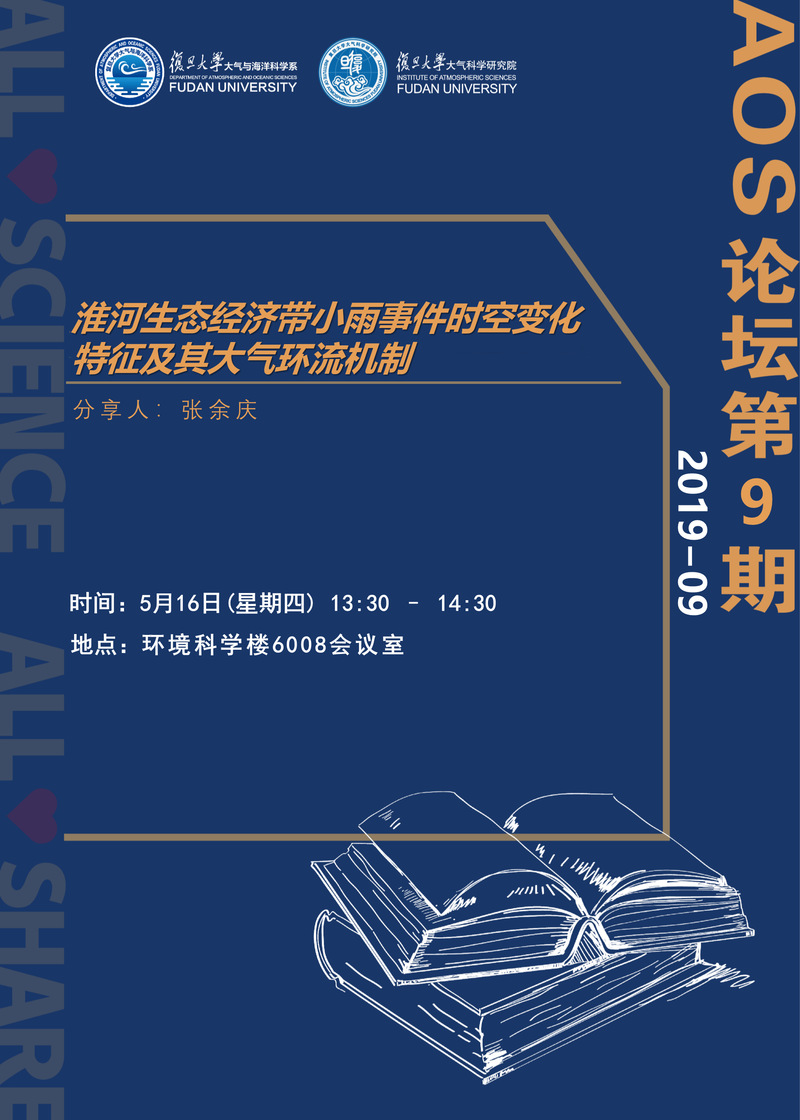
Title:Decrease in light precipitation events in Huai River Eco-economic Corridor, a climate transitional zone in eastern China
(淮河生态经济带小雨事件时空变化特征及其大气环流机制)
张余庆,Yuqing Zhang
Abstract: Light precipitation events generally occur much more frequently than events of other precipitation intensities. Changes in light precipitation amounts and days (length) over time have profound implications for climate change. There is a lack of quantitative monitoring indicators or in-depth analysis techniques for atmospheric circulation mechanisms of regional light precipitation events, especially in climate transitional zones. The Huai River Eco-economic Corridor (HREC) served as a case area in this study as we assessed trends in light precipitation events and their possible atmospheric circulation mechanisms. A significant decreasing trend in the light precipitation events is observed and appears to be mainly concentrated in the lower intensities (0.1≤P<2 mm/day). The decreasing trend is more obvious for consecutive than discrete light precipitation events. The mutation points for annual consecutive light precipitation events were found in 1977/1978, and averages in the later years of the observation period (1978-2014) fell significantly below those of the earlier period (1961-1977). Atmospheric circulation variables corresponding to the light precipitation days with intensity of 0.1-2 mm/day revealed that the decreasing trends in water vapor transport budgets, low cloud cover, and total column cloud liquid water may be the primary causes of decreased light precipitation events. The decreasing trends in light precipitation events were also likely attributable to increases in water vapor flux divergence, air temperature, and vertical velocity values.